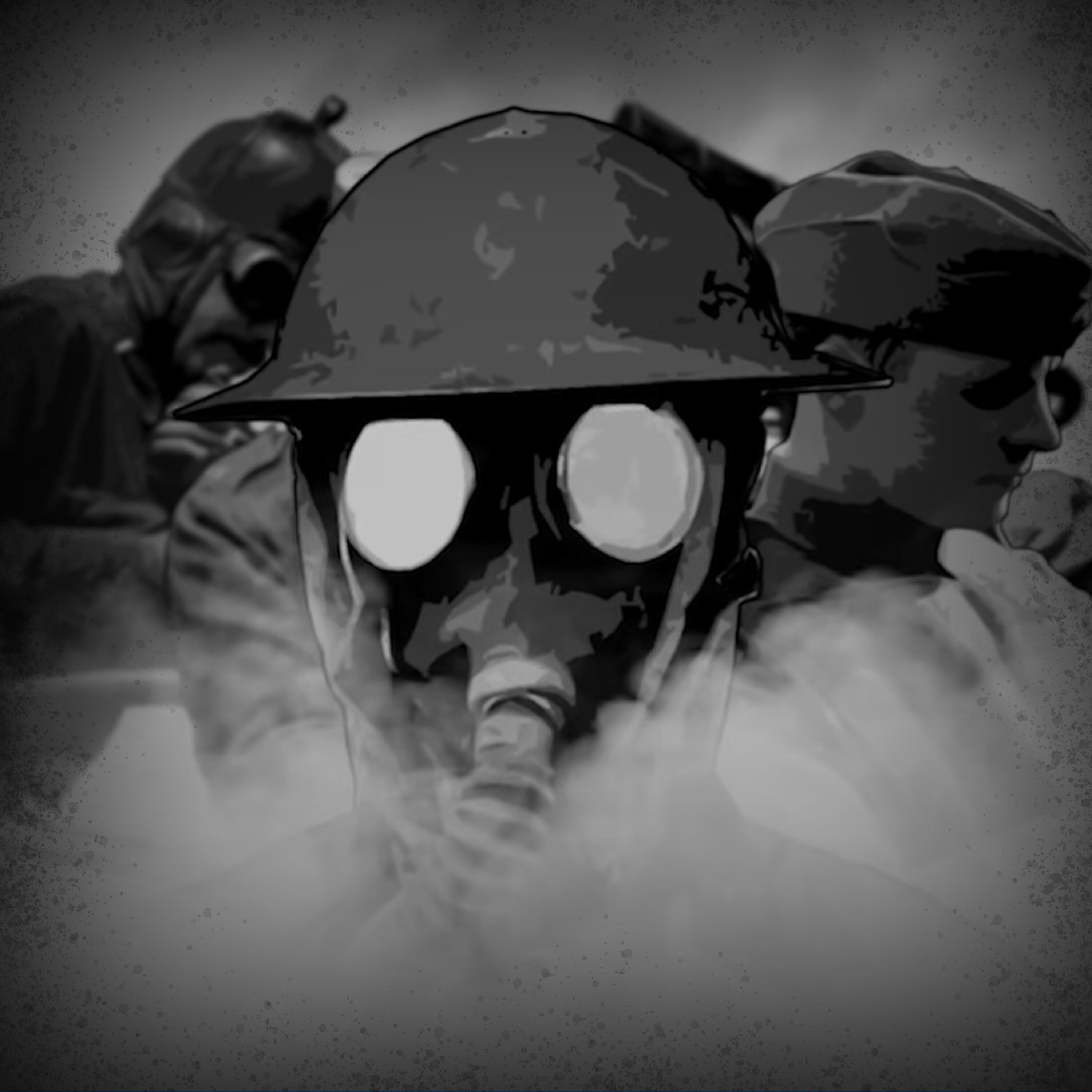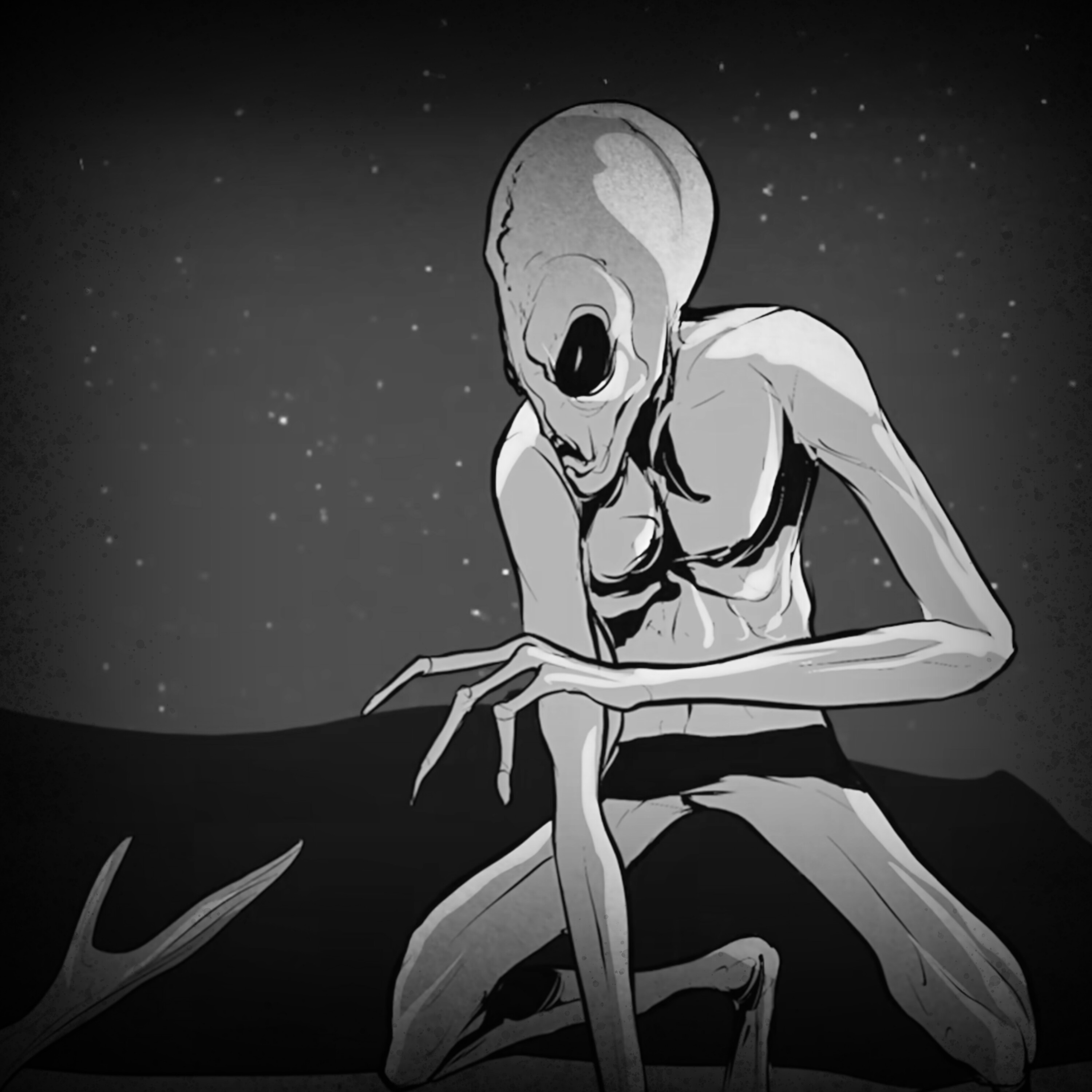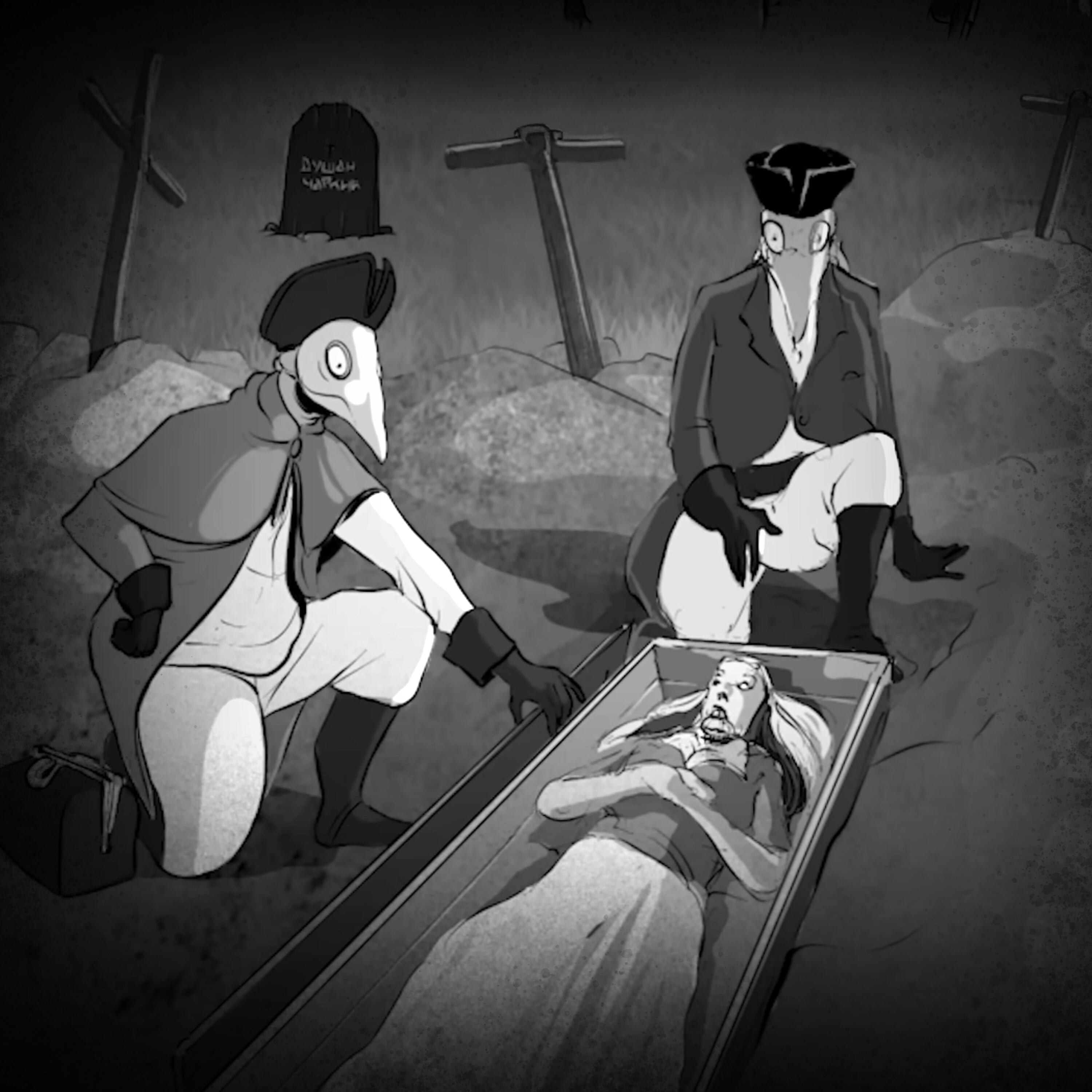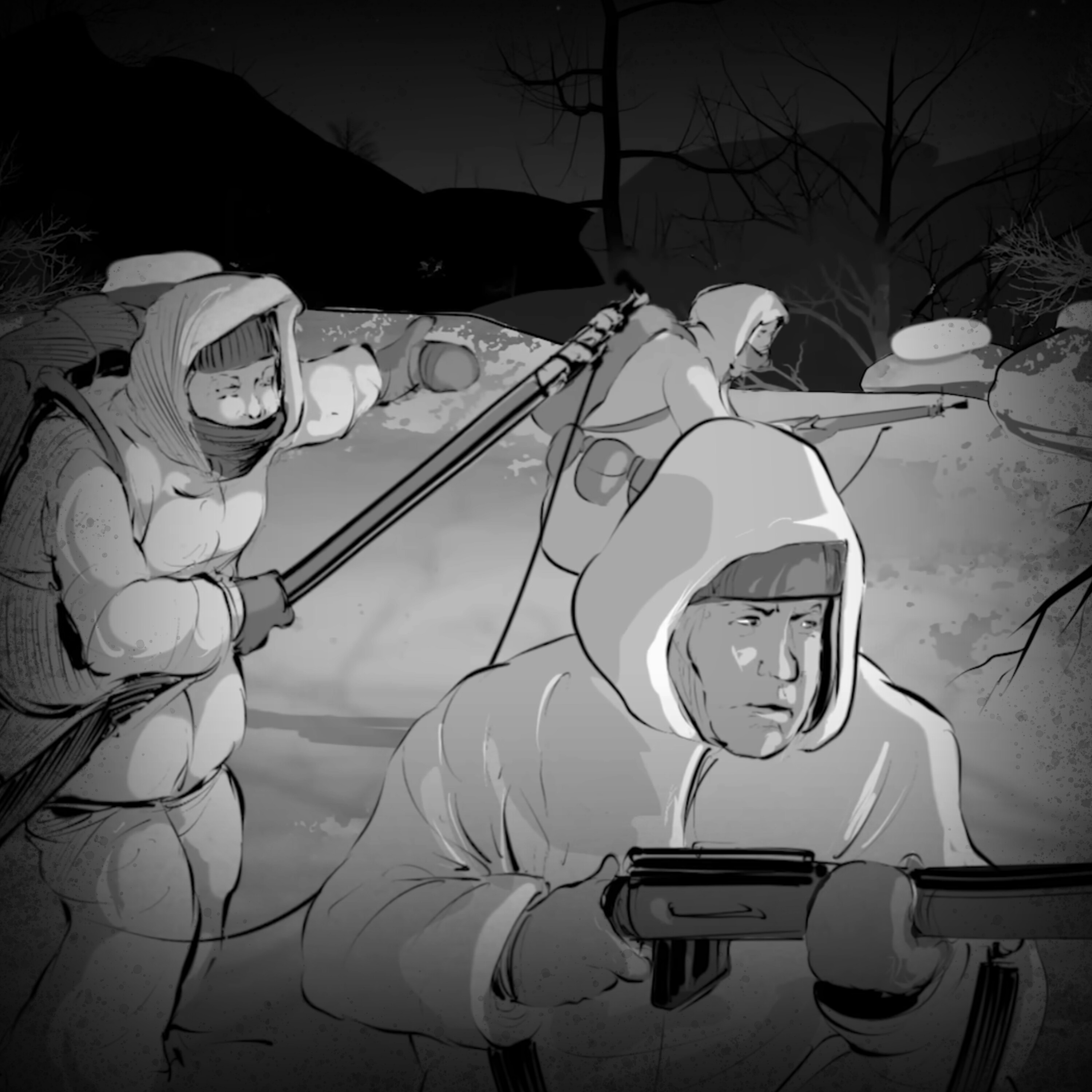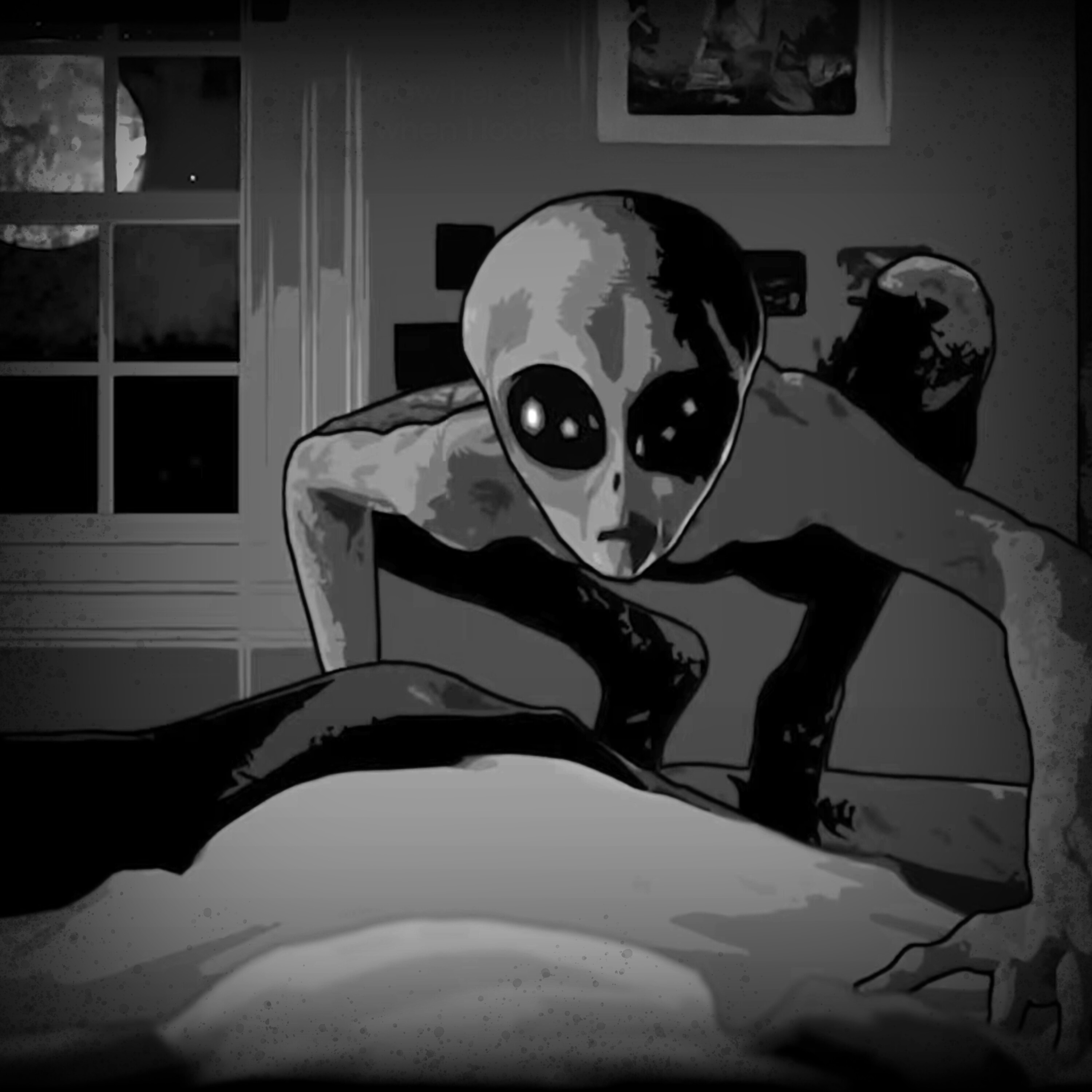What Was Killing These Men?
A German experiment that hunted British men on the front line.
See Privacy Policy at https://art19.com/privacy and California Privacy Notice at https://art19.com/privacy#do-not-sell-my-info.
Press play and read along
Transcript
Speaker 1 If you're drawn to stories like wartime stories, you'll enjoy exploring more from Balin Studios and Wondery, like my other podcast, Redacted Declassified Mysteries.
Speaker 1 Both shows are available early and ad-free on Wondery Plus. Start your free trial today.
Speaker 2 Fall is here and it's the perfect time for grilling. From tailgating to cozy family dinners, Omaha Steaks delivers the world's best steak experience right to your door.
Speaker 2 As America's original butcher since 1917, they offer USDA-certified USDA-certified tender steaks hand-cut by master butchers in the heartland.
Speaker 2 Enjoy juicy burgers, convenient comfort meals, and game-day favorites like chicken wings and deli-style franks.
Speaker 2 Their grass-fed, grain-finished beef delivers exceptional marbling and flavor that professional chefs trust worldwide. Plus, every bite is backed by their 100% satisfaction guarantee.
Speaker 2 Get fired up for fall grilling with Omaha Steaks. Visit omahasteaks.com for 50% off site-wide during their red-hot sale event, and for an extra $35 off, use promo code EATSTAKE at at checkout.
Speaker 2 That's 50% off at omahasteaks.com and an extra $35 off with promo code EATSTAKE at checkout. See site for details.
Speaker 3 The story you are about to hear comes from the front lines of World War I,
Speaker 3 a place where many men lost everything: their friends, their limbs, their lives.
Speaker 3 Some men survived, but lost something else. Their minds.
Speaker 3 Perhaps born out of the delusions that any man might suffer when taken from his ordinary life and subjected to an unfamiliar and hellacious environment that pushes both his body and his mind to the breaking point, some of these young men returned home with far more than the usual stories of combat.
Speaker 3
They spoke of something else that they encountered. Something unnatural.
A highly intelligent creature that prowled the frontline trenches.
Speaker 3 The men who might have assured us that what they saw was indeed real and not a figment of their imagination, they are now gone.
Speaker 3 But their incredible story remains: the story of the hound of Mons.
Speaker 1 I'm Luke Lamana,
Speaker 4 and this is Wartime Stories
Speaker 4 Well I'll say we have a go at it. Yeah?
Speaker 4 Try and pull him over. Yeah,
Speaker 4 after you mean
Speaker 4
listen, we can't just leave that poor sod out there. Think if it was you.
He'd want us to come and get you, wouldn't you? Be daft.
Speaker 4
We head out there. We're as good as dead.
You know that.
Speaker 4 Could be a damn hunt for all you know.
Speaker 4
Listen, he sounds close enough. All we need to do is just slip over.
I'm not going out there.
Speaker 4 You hear me?
Speaker 4 It'll get us just like it's gonna get him.
Speaker 4 What?
Speaker 4 Before what gets us?
Speaker 4 I've seen him out there, you know?
Speaker 4 Walking about the fog,
Speaker 4 like a phantom,
Speaker 4 just watching us.
Speaker 4
That beast. Oh, he's being deaf now.
Do you honestly believe that lad of bollocks? A bad dog? I've seen the bodies
Speaker 4 gutted,
Speaker 4 taunted bits. Shut it, alright? Shut it with that talk.
Speaker 4 Doesn't do anybody any good.
Speaker 4 Hey? Christ.
Speaker 4 You, uh.
Speaker 4 You got first watch, yeah?
Speaker 4 One single shot.
Speaker 4 That's all it took to set the world alight.
Speaker 4 The report from the assassin's pistol echoed through the streets of Sarajevo, its earth-shattering effects rippling through the great powers of Europe, already poised and teetering on the edge of conflict.
Speaker 4 The lowly assassin had no way of realizing it at the time, but he had just set in motion a series of events that would reshape Europe and the world forever.
Speaker 4 In four short years, mighty empires of old would fall, new nations and superpowers rising from their ashes in the dawn of a new era, a road forward paved through unparalleled destruction and loss of life never before seen on the stage of human warfare.
Speaker 4 As much as it can be credited with setting the stage for the modern world, the Great War would also provide an awe-inspiring, albeit horrific, demonstration of early modern warfare.
Speaker 4 Machine guns firing hundreds of rounds per minute could wipe out entire companies in seconds.
Speaker 4 Poison gas, drifting with eerie indifference across the battlefield, burned men alive from the inside, leaving them to heave, gag, scream, and vomit in the midst of the enemy's advance.
Speaker 4 Despite being in their technological infancy, airplanes would soon be converted into machines of war, hunting in the clouds over war-torn lands.
Speaker 4 Fleets of massive, proud dreadnoughts sailed the high seas, whilst submarines stalked them in the depths.
Speaker 4 Targets of all sorts were on the table, troop formations, factories, supply convoys, and civilian epicenters.
Speaker 4 It is industrialized killing on a scale never before encountered in the realm of human conflict, the birth of modern warfare embodied by steel and blood.
Speaker 4 While fighting raged on the front lines, thinkers, draftsmen, engineers, and doctors on both sides of the warring parties were in a continual race against time to provide their fighting men with the latest, more effective weapons to bring to bear against the enemy.
Speaker 4 A continual flow of new weapons and machines would make their way into the hands of soldiers, sailors, and airmen of the Allied Entente and Central Powers, each new arrival prompting a fresh wave of death to sweep the front.
Speaker 4 Indeed, men would ride into the war in 1914 on horseback, only to ride out of it on the backs of tanks in 1918.
Speaker 4 In the midst of this arms race, an eccentric German scientist set into motion the plans for a prototypical biological weapon to unleash upon the Allied powers of France and Britain.
Speaker 4 This weapon wasn't a form of poison gas, nor was it in the realm of some sort of weaponized disease or virus. No, the idea that this scientist had, a man by the name of Dr.
Speaker 4 Gottlieb Hochmüller, was one that would push the very limits of known science, both technologically and ethically.
Speaker 4 Much like any other vehicle of the war, Dr. Hochmüller's weapon would require two primary components, a vehicular chassis and a pilot to take command.
Speaker 4
The machine itself needed to be robust, fast, agile, and strong. Hochmuller's machine, however, would not be one of oil and steel.
His would be of flesh and blood.
Speaker 4 The cadaver chosen as the baseplate of the prototype was a massive Siberian wolfhound.
Speaker 4 While being a physically suitable candidate, the animal possessed a rather, shall we say, mild temperament, not the ideal option for anyone in the market for an attack dog.
Speaker 4 Hochmuller had a remedy in mind, however. This machine still needed a pilot.
Speaker 4 As the war transitioned into a stalemate, the savagery of frontline combat began to take its toll on the men fighting on both sides of the line.
Speaker 4 In Germany, hospitals and asylums alike were rapidly filling up with young men who, despite bearing little to no physical wounds, were mentally shattered by war's horrific nature.
Speaker 4 It is amongst the ranks of these poor fractured souls that a predatory Dr. Hochmuller scouted for his ideal recruit.
Speaker 4 The prime candidate was found securely locked away from his fellow inmates and hospital staff for their safety.
Speaker 4 Whilst his mind was irreparably damaged by the inhuman sights of the front, the soldier's combat instinct and yearning for violence remained.
Speaker 4 In fact, it seemed to all observers that spilling British blood, in particular, seemed to be his one, all-consuming motivation, dominating every word, thought, and action.
Speaker 4 The doctor looked upon the young soldier, driven mad with bloodlust, and saw nothing but potential. The young man's body would be of no use to him, however.
Speaker 4 It was his brain, with all its yearning for violence, that was the final piece in the doctor's puzzle.
Speaker 4 Breathing is able.
Speaker 4 Good vice.
Speaker 4 How would you listen to those lungs?
Speaker 4 Can he hear us?
Speaker 4 Mula.
Speaker 4 Mula?
Speaker 4 Can you hear me?
Speaker 4 Come towards my voice, Salad.
Speaker 4 Gordonir.
Speaker 4 Good man, Mula. Good man.
Speaker 4 Do you recognize your name?
Speaker 4 Does Mula ring a bell?
Speaker 4 Are we sure he's alright?
Speaker 4 Doesn't sound too good. Come, it's the last breaths, my dear August.
Speaker 4 We must be patient, yes?
Speaker 4 I know this is a bit of an adjustment, my friend.
Speaker 4 I apologize.
Speaker 4 God, if you can see yourself
Speaker 4 strong,
Speaker 4 fearsome,
Speaker 4 formidable.
Speaker 4 Think we could do something about the older.
Speaker 4 I realize he's a dog.
Speaker 4 Sorry, I asked.
Speaker 4 Save that energy for the British.
Speaker 4 But fear, you will inspire.
Speaker 4 I wonder.
Speaker 4 The night of November 14th, 1914, was in no way unique or spectacular, at least by the standards of the now solidified Western Front.
Speaker 4 The late fall air coursed over the battlefields and into the trenches, prompting the dampened, mud-caked soldiers to shiver in their boots, their teeth chattering as rapidly as the Huns' notorious machine guns.
Speaker 4 Still, despite the less-than-ideal conditions, there was work to be done.
Speaker 4 While no major pushes loomed on the horizon, common actions such as trench raids and reconnaissance patrols into no man's land were more than enough to keep both sides on their toes during the frequent lulls in the action.
Speaker 4 Alongside four other colleagues in the London Fusiliers, a young captain Jeskis prepares to spearhead one such venture beyond the wire.
Speaker 4 Alright lads, this isn't our first dance.
Speaker 4 Nothing that reflects or rattles.
Speaker 4
Flare goes up, you go down. If you get hit, try to make it back to the lines.
If not,
Speaker 4 stay where you are. Wait for a stretcher.
Speaker 4 Any questions?
Speaker 4 Nice shot.
Speaker 4 Right then.
Speaker 4 Let's get on with it.
Speaker 4 And so they went, one by one, over the top and into the looming darkness,
Speaker 4 never
Speaker 4 to be seen again.
Speaker 4 Not alive, anyway.
Speaker 1
Hey, it's Luke, the host of Wartime Stories. As many of you know, Mr.
Balin and Balin Studios have been a huge help in bringing this podcast to life.
Speaker 1
And if you'd like to believe you are something of a storytelling connoisseur, then you need to check out Mr. Balin's podcast, Strange, Dark, and Mysterious.
Each week, Mr.
Speaker 1 Balin weaves gripping tales of the Strange, Dark, and Mysterious, diving into true crime, unsolved mysteries, and paranormal events that keep you on the edge of your seat. Mr.
Speaker 1 Bollin's podcast, Strange, Dark, and Mysterious, is available on all podcast platforms and it is free, just like ours.
Speaker 1
There are hundreds of episodes available to binge right now with new episodes twice a week. Go listen to the Mr.
Bollin podcast today.
Speaker 4 For several days, nothing was seen or heard from the captain and his patrol.
Speaker 4 Many speculated that, like many patrols that had ventured into the void between the lines, the men had simply fallen to any number of perils.
Speaker 4 Snipers, artillery, machine guns, parties of enemy soldiers. None of those, however, could account for the truly horrific fate that befell Captain Jeskis and his men.
Speaker 4 It was another patrol that found them. Or rather, what was left of them.
Speaker 4 Oh, God Almighty.
Speaker 4 Sir.
Speaker 4 Sir, up here.
Speaker 4 Have a look at this.
Speaker 4 What is it? Down there. Oh, blood hell.
Speaker 4 You know what you supposed to happen to him?
Speaker 4 That looked like machine guns doing to you.
Speaker 4 More like artillery.
Speaker 4 Maybe. So
Speaker 4 you, uh...
Speaker 4 He sent Escap Mieskis and his boys.
Speaker 4 I, uh...
Speaker 4 I can't tell.
Speaker 4 All five men had been brutally mauled, their throats and bodies shredded, not by bullets or shrapnel, but by the razor-sharp claws and teeth of a bloodthirsty beast.
Speaker 4 Their faces, barely recognizable through blood and mutilation, were frozen in the horror and unimaginable pain of their final moments.
Speaker 4 An overwhelming feeling of dread and foreboding swept the British lines near the Belgian town of Mons. These men, having been subjected to months of savage fighting, were no strangers to death.
Speaker 4
They were well acquainted with it in all manner of speaking. Still, the fate of Captain Jeskis and his men haunted them.
Like wildfire, tales began to spread throughout the ranks.
Speaker 4 Sentries, ever watchful of the land beyond the relative safety of their trench, spoke of a hellhound prowling in the darkness, almost carried on the mist and the fog that loomed over the desolate wasteland.
Speaker 4 Some nights, when the moon shined just right, some swore they caught the reflective eyes of a beast staring at them from the enveloping darkness.
Speaker 4 Tall tales of monsters and phantoms were nothing new to the men on the front.
Speaker 4 Much like the many myths that came before them, they often dismissed these claims as tricks of the mind due to fatigue or, in some cases, loss of sanity.
Speaker 4 But no one could deny what was heard from the darkness beyond the front line.
Speaker 4 Blood curling, hair-raising, primal, animalistic tones blending with hints of detectable human rage.
Speaker 4
It was not the bellowing howl of any natural beast. It was a battle cry, a warning to its prey, men clad in British fatigues.
The hound was out there, and it was hungry.
Speaker 4 As the British and their German adversaries spent the days trading gunfire, artillery, and, if wind carried, sound just right, the occasional insult, the knights belonged to the hound.
Speaker 4 Patrols sent into no man's land under cover of darkness were wary of the supposed danger that stalked them in the night.
Speaker 4 Even those who didn't believe in the stories couldn't shake the image of those two glowing eyes, reflecting in the night, watching them. Still, over they went.
Speaker 4 More often than not, it seemed, they never returned.
Speaker 4 The bodies would always be found in much the same way, their throats slashed, flesh torn away in chunks, entrails left scattered and exposed about their mutilated forms.
Speaker 4 Night after night, this cycle of death continued, until, almost as soon as the hound's reign of terror began,
Speaker 4 he vanished, seemingly without a trace.
Speaker 4 The war would carry on, the Hound of Mons becoming nothing more than another soldier's myth in a conflict that was becoming ever more difficult to understand.
Speaker 4 But to the men who had heard the beast's terrible, otherworldly howl, or locked eyes with its predatory gaze in the darkness, it was horrible, terrifying reality.
Speaker 4 The Hound of Mons has found itself a comfortable home nestled in the vast catalogue of wartime myths and legends spawned from the battlefields of the First World War.
Speaker 4 From spectral armies of medieval archers, bands of cannibalistic madmen lurking in no man's land, to ghostly encounters of fallen comrades, there are few paranormal stones left unturned by the men who witnessed the war's carnage.
Speaker 4 Plenty of these claims can be chalked up to one reasonable explanation or another.
Speaker 4 After all, the human mind under such physical and psychological distress is capable of drawing some odd, oftentimes terrifying conclusions. So what of this supposed hound of Mons?
Speaker 4 Is it yet another frontline myth? Or was some sort of inhuman weapon truly unleashed upon the British in 1914?
Speaker 4 It doesn't take an awful lot of digging to find that no official documentation or written reports cite the existence of such a creature on either side of the conflict.
Speaker 4
In fact, the first mention of the tale didn't come until 1919 from a Canadian veteran by the name of F.J. Newhouse.
His fantastical claims were, understandably, met with widespread skepticism.
Speaker 4 Further skimming of official British military records will yield no evidence of a Captain Jeskes serving with the London Fusiliers, and likewise no German documents seem to mention the works or existence of a Dr.
Speaker 4
Gottlieb Hochmüller. Newhouse was adamant that he himself had seen documentation proving the existence of Hochmüller's experiment.
However, said documents have conveniently never surfaced.
Speaker 4 Still, without even delving into the official history, there do exist other, more grounded theories.
Speaker 4 The first culprit that often comes to mind would be that the supposed hound of Mons was nothing more than a common wolf.
Speaker 4 Western Europe was indeed no stranger to large populations of these incredible predators, boasting large populations around the time of the 15th century.
Speaker 4 However, continued, oftentimes hostile encounters between wolves and humans led to a concerted effort throughout much of the continent to wipe out regional packs.
Speaker 4 In Belgium where Mons is located, the last wolf was thought to have been killed in 1898, over 15 years before the Great War began.
Speaker 4 Some other corners of Europe, namely England, have wiped out their respective wolf population as early as the 16th century.
Speaker 4 In recent times, wolves have begun to make a small comeback on Belgian turf, with two small packs of around 10 to 12 strong thought to be active in 2022.
Speaker 4 Taking into account the migration of these animals combined with the general hit hit or misaccuracy of early 20th century documentation, is it possible that Belgian wolves endured beyond their supposed extinction in 1898?
Speaker 4 A young British soldier, having never seen such a powerful predatory canine on his home island, would no doubt be taken aback by the sight of a massive dog wandering about in no man's land, or be shaken to the core by its eerie trademark howls in the night.
Speaker 4 And with plenty of fresh meat in the form of fallen comrades being in no short supply,
Speaker 4 The Hound of Mons is an oddity in the realm of battlefield myths.
Speaker 4 While it is admittedly an absurd premise, it offers a unique insight into the minds of the young men who witnessed the war's unrestrained brutality.
Speaker 4 The soldiers of the Great War, many of them quite literally children, were immersed in an environment so cold, unfeeling, and inhuman that the very reality they were presented with was in and of itself surreal to the point of incomprehension.
Speaker 4 The human mind, fatigued and fractured by the soul-taxing nature of combat, will attempt to make sense of it all. Anything to rationalize the hell going on around it.
Speaker 4 Shadows in the fog take the shape of demons, specters, and beasts. Flesh torn by bullets and shrapnel are the work of predatory fangs and claws.
Speaker 4 While the story of the Hound of Mons may be nothing more than a work of fiction, the potential sentiment behind it may very well ring true.
Speaker 4 That in the face of war's hellish reality, the mind will see what it wants to see.
Speaker 4 Lingering, watching, waiting,
Speaker 4 hunting in the land beyond the wire.
Speaker 4
Wartime Stories is created and hosted by me, Luke Lamana. Executive produced by Mr.
Bollin, Nick Witters, and Zach Levitt. Written by Jake Howard and myself.
Speaker 4
Audio editing and sound design by me, Cole Acasio, and Whitlacascio. Additional editing by Davin Intag and Jordan Stidham.
Research by me, Jake Howard, Evan Beamer, and Camille Callahan.
Speaker 4
Mixed and mastered by Brendan Kane. Production supervision by Jeremy Bone.
Production coordination by Avery Siegel. Additional production support by Brooklyn Gooden.
Speaker 4 Artwork by Jessica Clongson Kiner, Robin Vane, and Picada. If you'd like to get in touch or share your own story, you can email me at info at wartime stories.com.
Speaker 4 Thank you so much for listening to Wartime Stories.
